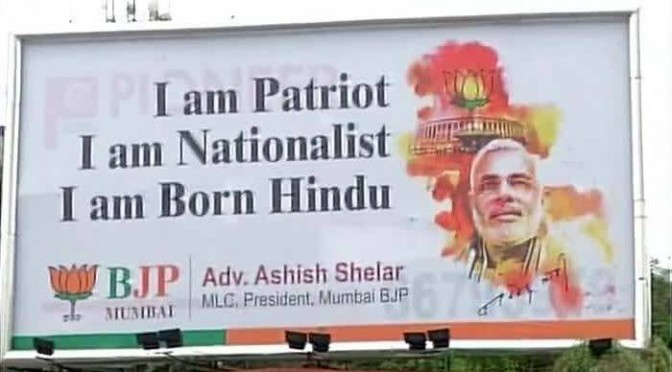Constructing History in Saffron Colours
The construction of Hindu nationalism

NEW DELHI: It is generally noted that propaganda is talked about, debated, theorised and thus exposed only after it’s not there anymore, Or, after the 'regime' has ended. One can give the example of the totalitarianism of Stalin’s Russia, or Hitler's Reich, which has turned into a folklorish tale which even the most incurious student of history would be aware of. But as long as the regime lasted both the dictators wielded unchallenged support of the masses and it was not until they were dead that their gross crimes came under the scrutiny of daylight.
Though propaganda has been used to stultify people's minds by the hegemons since the birth of empires, often this campaign of spreading falsities and popularisation of irrationalities take place in democratic states where masses think that they are very unlikely to show their faces, and generally keep their guard down. But contradictorily, it is precisely in those states where the masses are most prone to fall victim to subverting enticements of the government because of the very fact that it has been chosen by people themselves and they have faith in it. Unfortunately, such is the atmosphere which is gaining strength in India of late, and it is needless to say that there's a very popular government which is producing it.
There are obscurantist forces in our nation at present which are constantly working for the stupefaction and homogenisation of the general public. They are doing it very subtly so as not to provoke incredulity or fear among people. Even I was impervious so far to the hucksterism of the Hindu brigade till the time they tried to mould the liberal environment of our educational institutes. There can be cited many instances to prove the above accusation but, I shall endeavour to convey my point by just one instance which I found in my last trip to Assam as part of a project team sent under the Gyanodya initiative.
Our first destination was Guwahati, the city which hosts the bureaucratic block known as Dispur, which is also the capital of Assam. I was one of the cubs who were coaxed into belief that there will be field visits to various hubs of small industries for e.g. tea plantation, complemented with sight-seeing. But from the very start it was nothing more than a grand temple run. On the first day we visited Kamakhya Devi’s temple, whose in-house deity, it is believed, can only be pleased by certain sacrificial blandishments. Later in the day they threw in a visit to more moderate Iskcon to balance the bloodcurdling effects one feels after witnessing the gory hewing of bulls and lambs at Kamakhya.
In the later days students were made to witness a mythic sanctimony of Umananda temple, and an exclusive visit to Satara temple in Barpeta, where women and “Muslims” are not allowed. We finally capped our great ‘pilgrimage’ on the penultimate day of our trip with homage to Agnigarh in Tejpur, famous for the legendary tale of love between Chitralekha and Aniruddha, grandson of Krishna.
Although, we made a trip to Sualkuchi, the hub of the silk-industry in Assam, and Kaziranga, they seemed just incidental to our journey, and epiphenomenal to the core philosophy of our sojourn, which I would liken to the ‘homecoming’ of a different kind and scale. I had never expected, nor wished, the ideological strains of our ruling party to be so deeply effecting. This forced supplication imposed on the young (and hopefully bright) of India is another manifestation of the incumbent party’s perceived ideology, which finds its consonance in the prescient words of George Orwell who said that,” In a totalitarian society, History is something to be created rather than learned”.
The changes being made by the people who we repose our faith in, are too subliminal for us to perceive in real time but, by the time they have begun to show their pattern they would have done damage to the extent that it will take decades for us to sift the real from the constructed.



